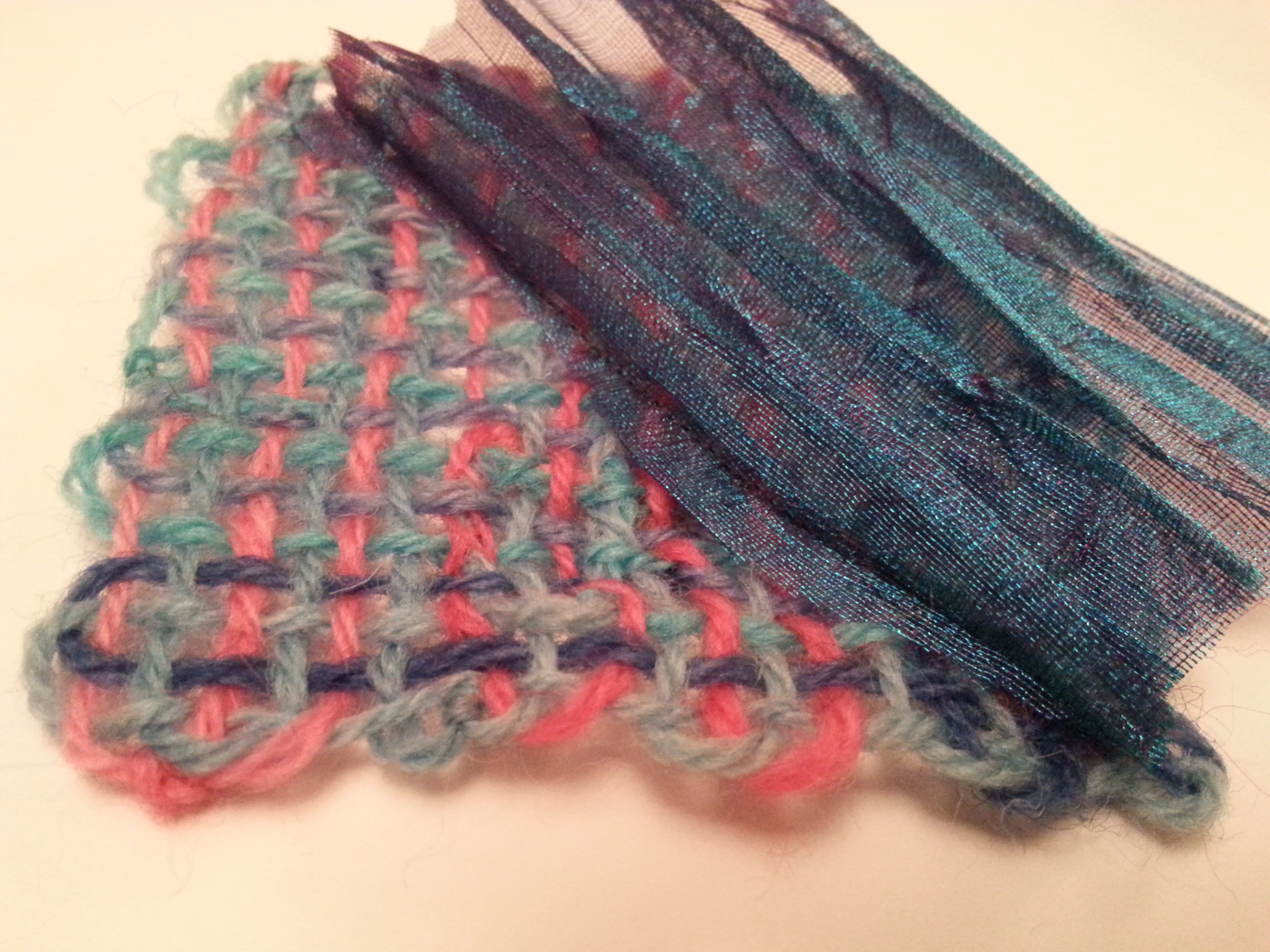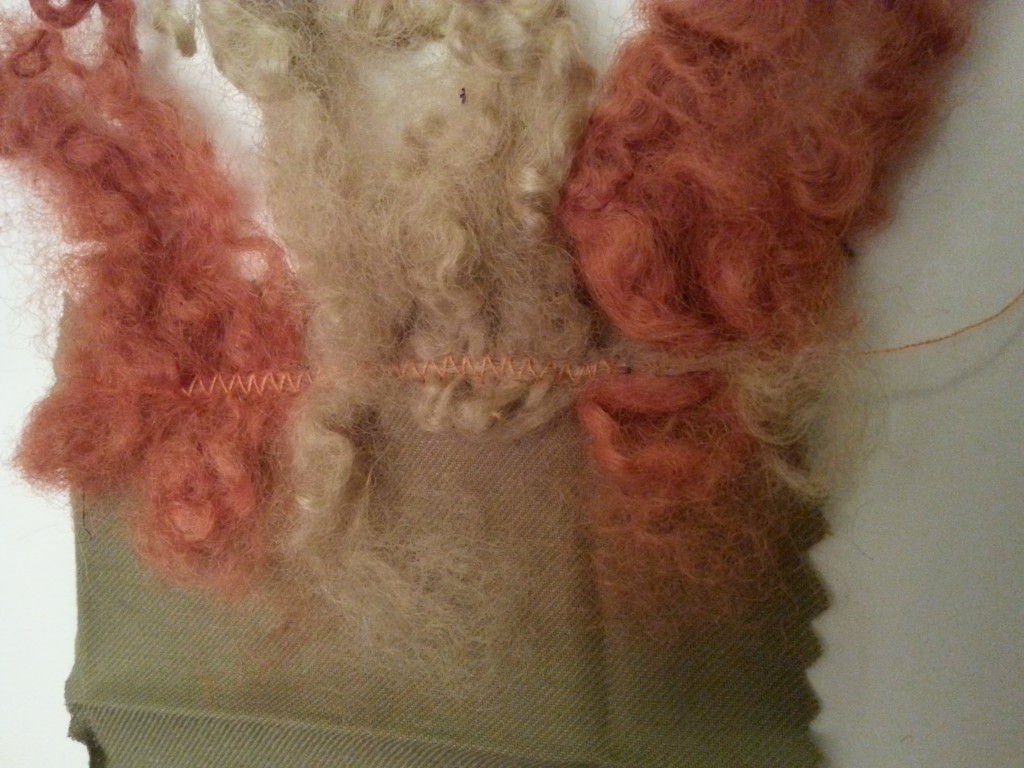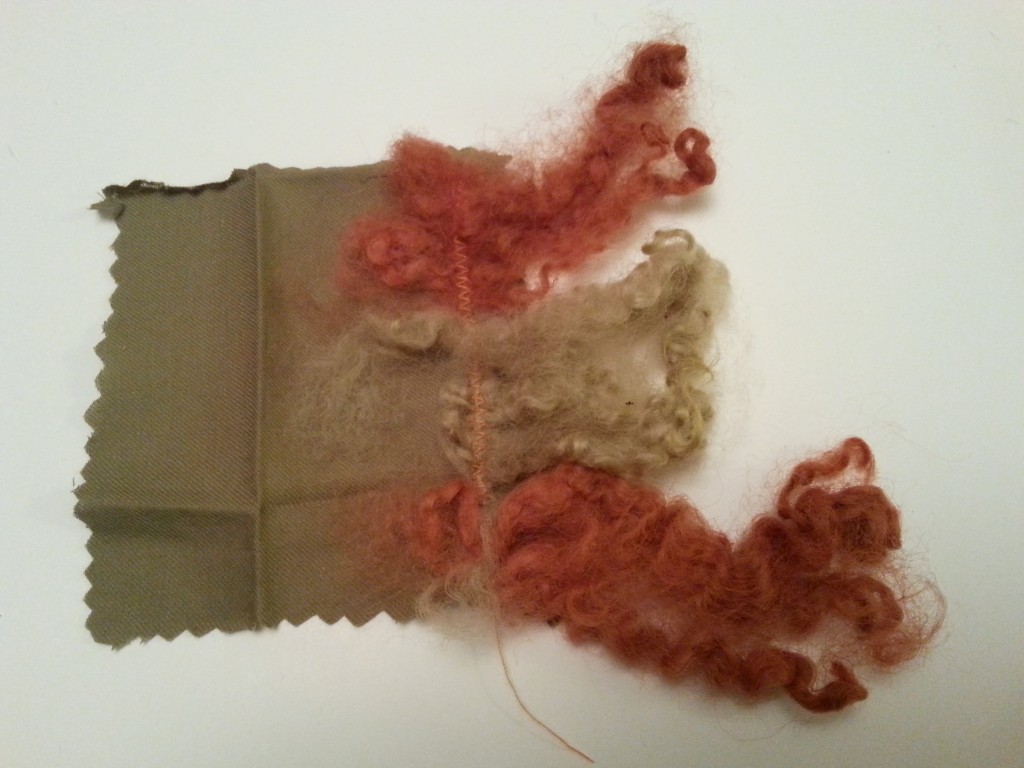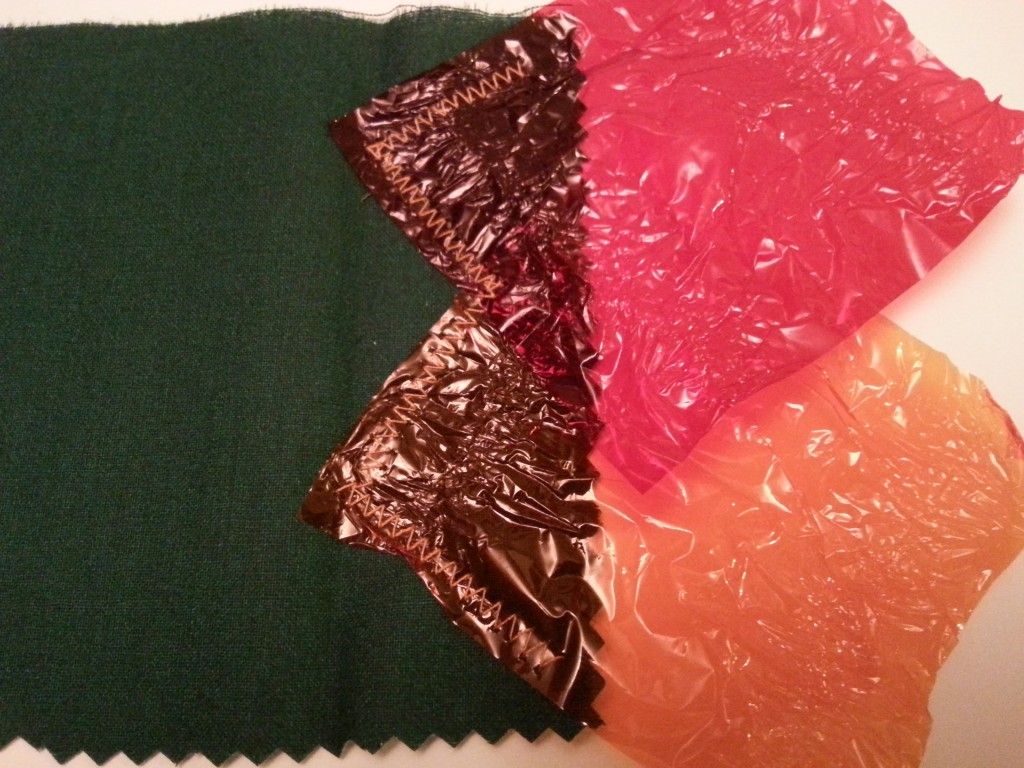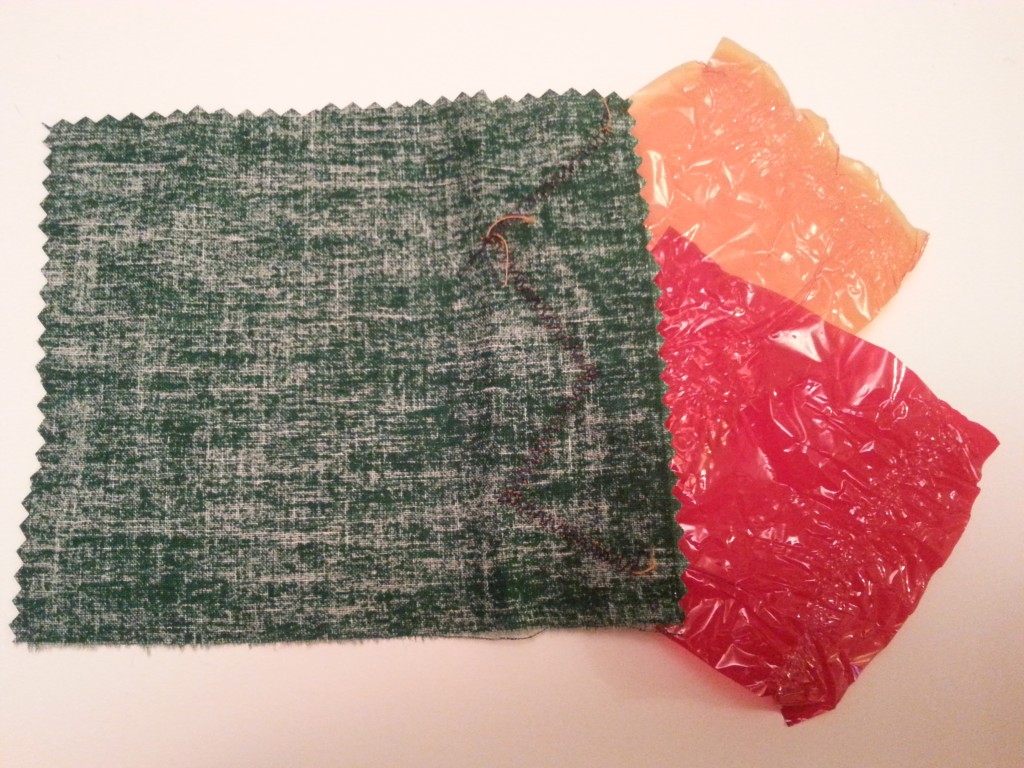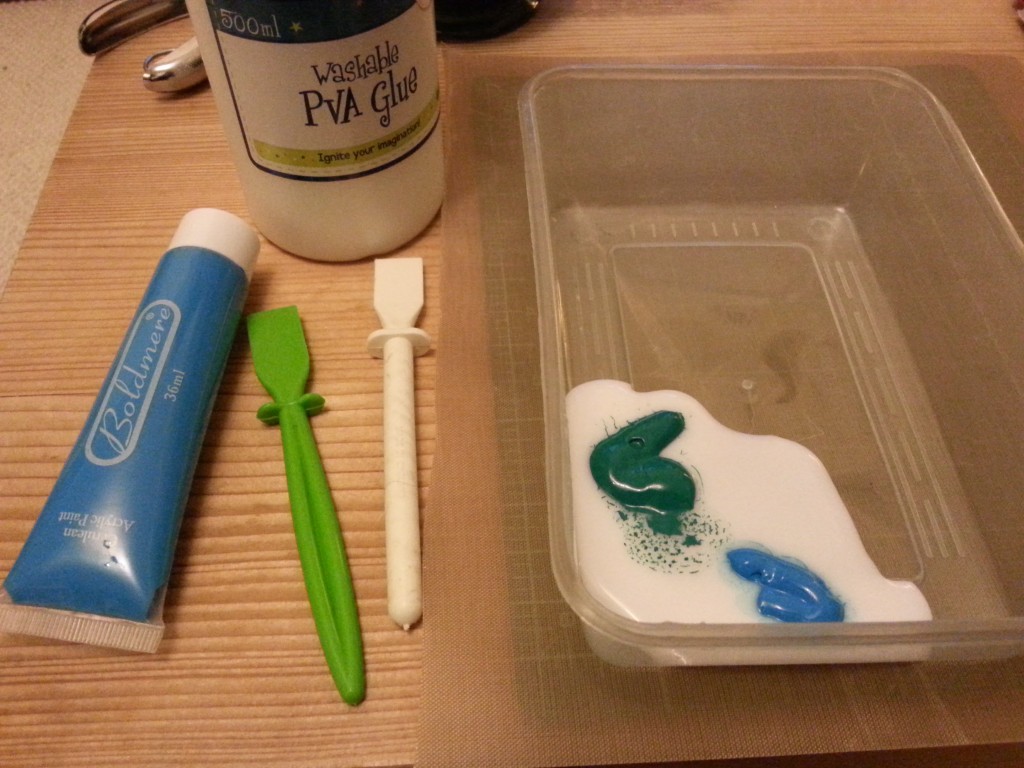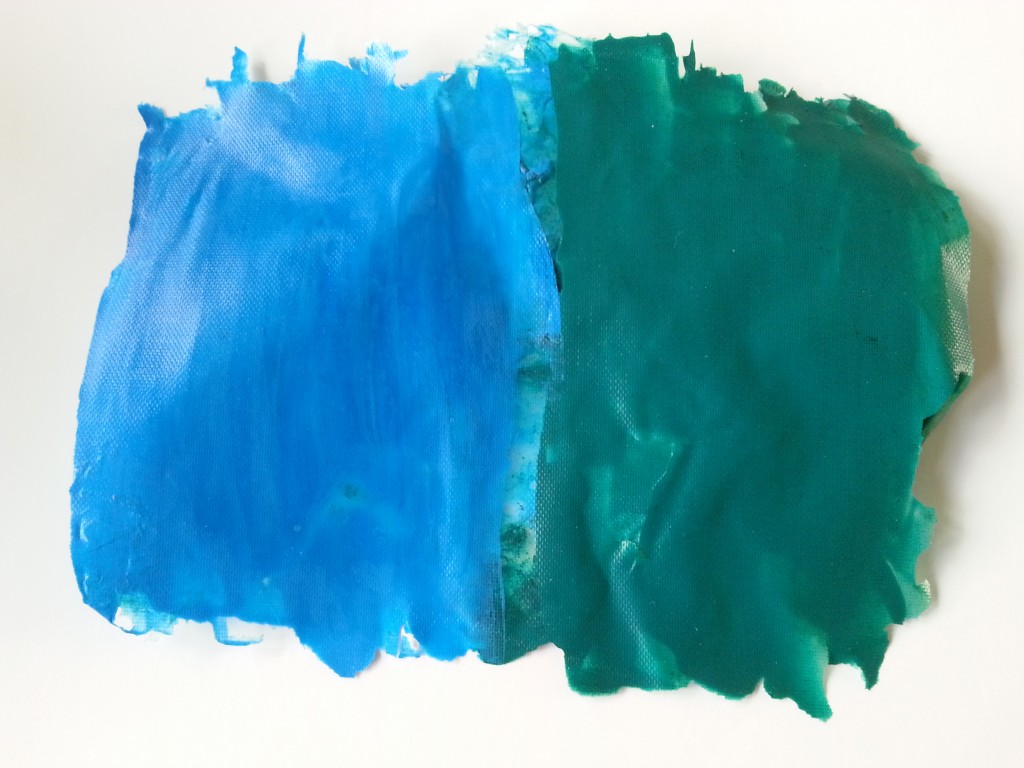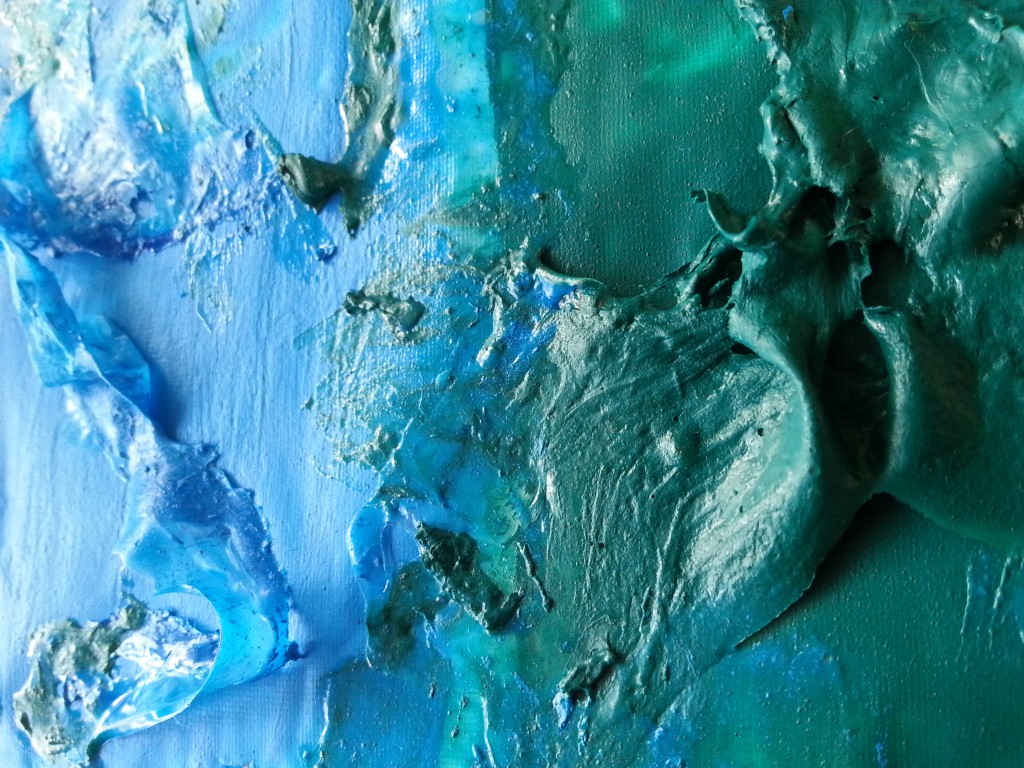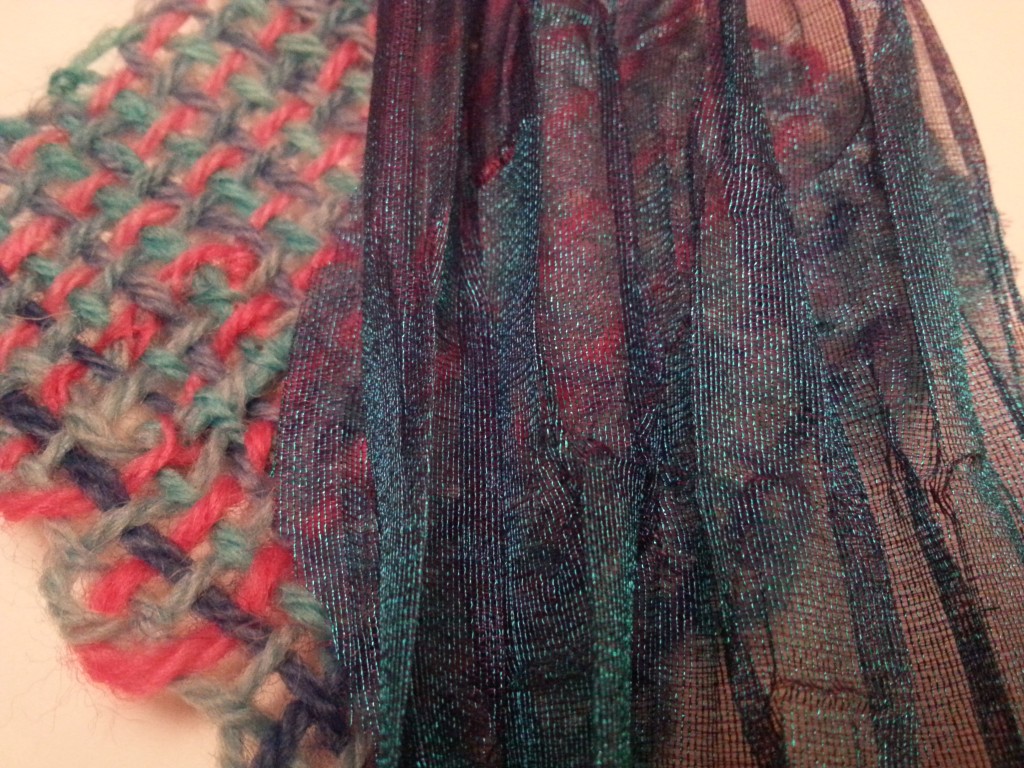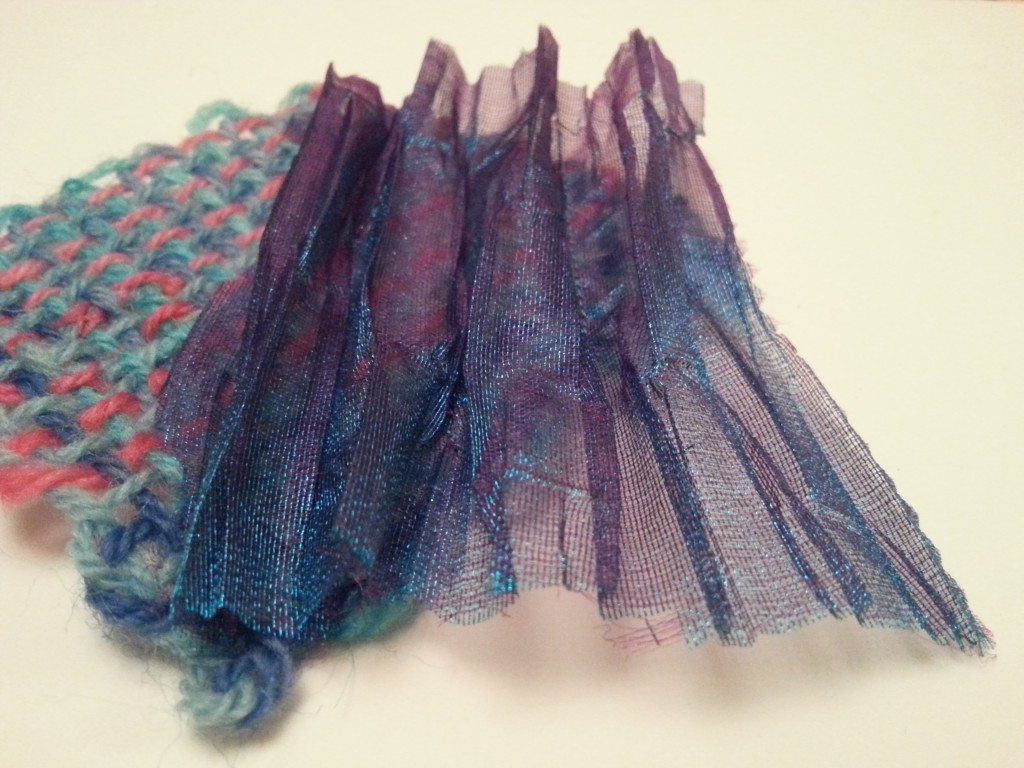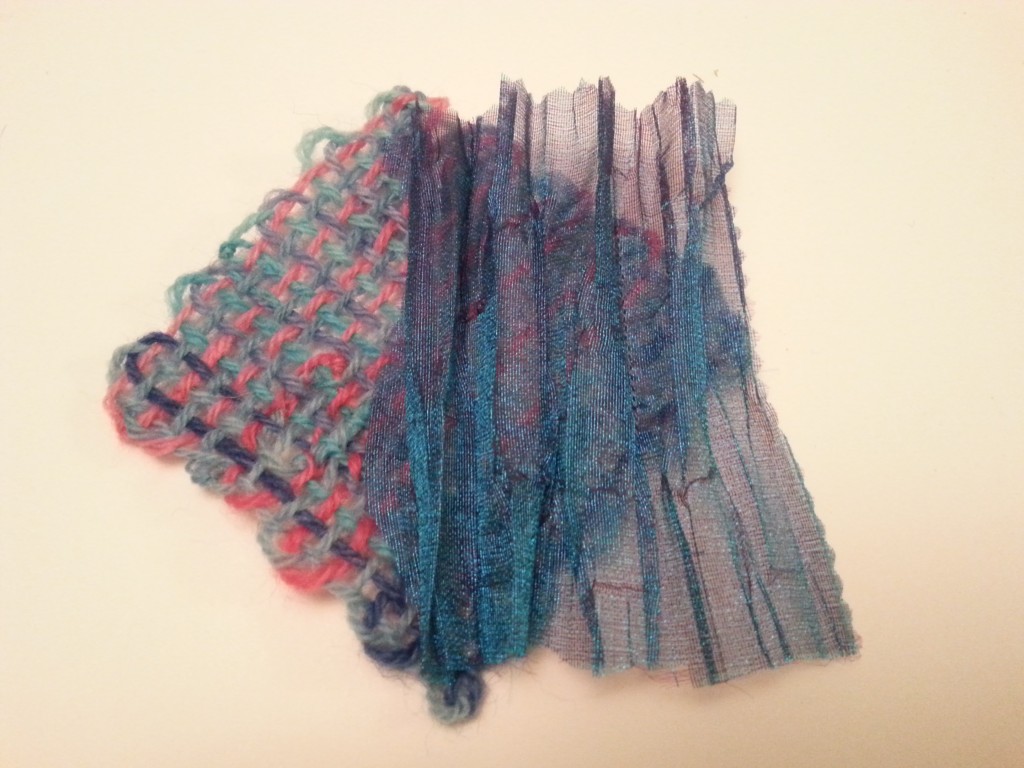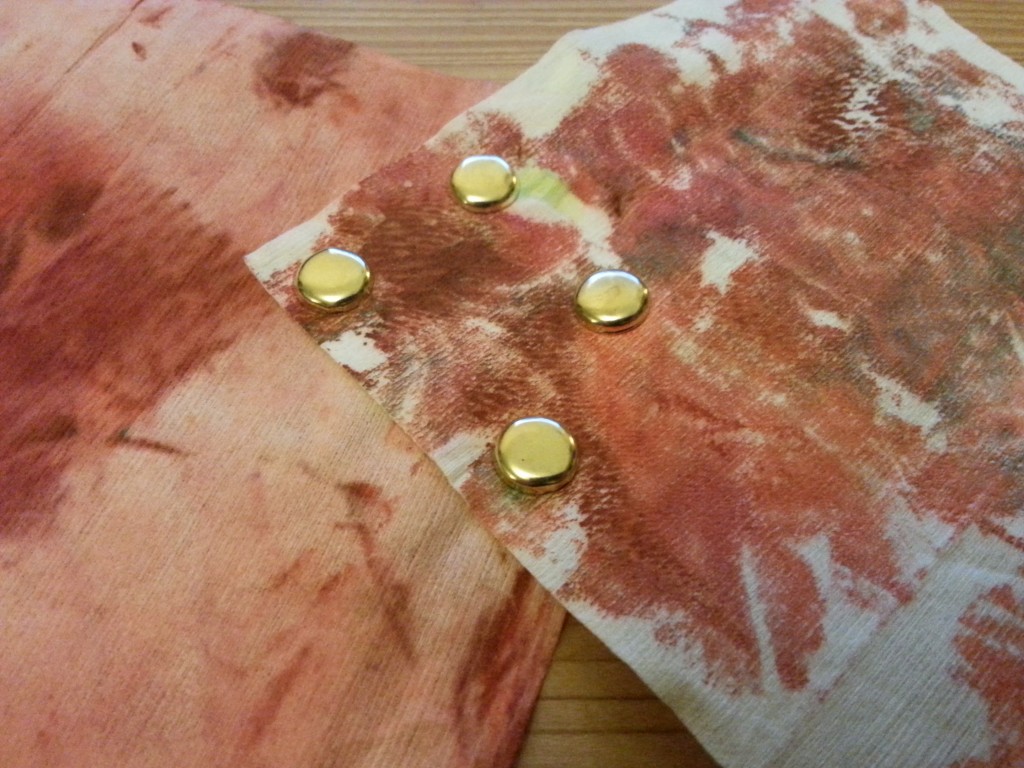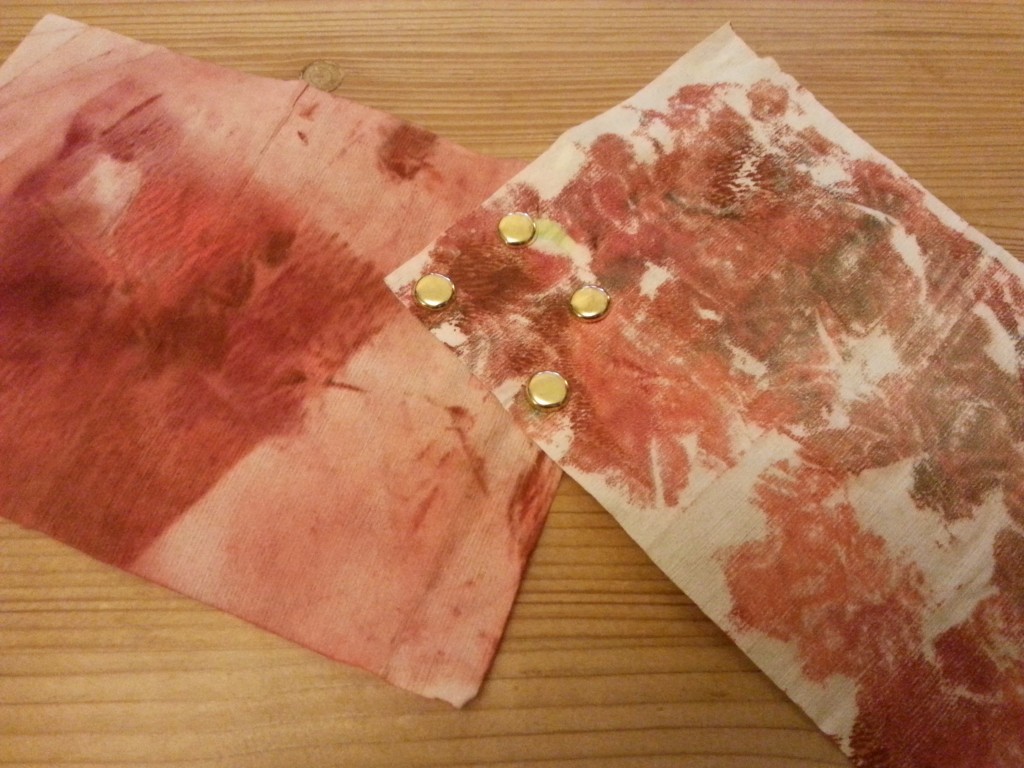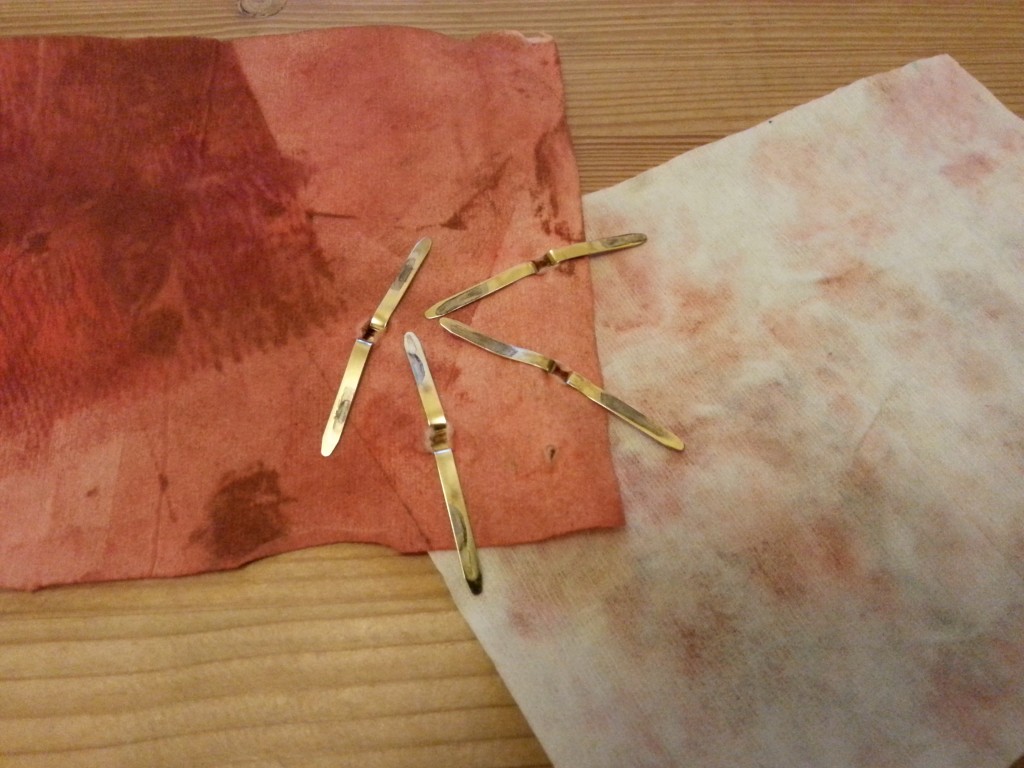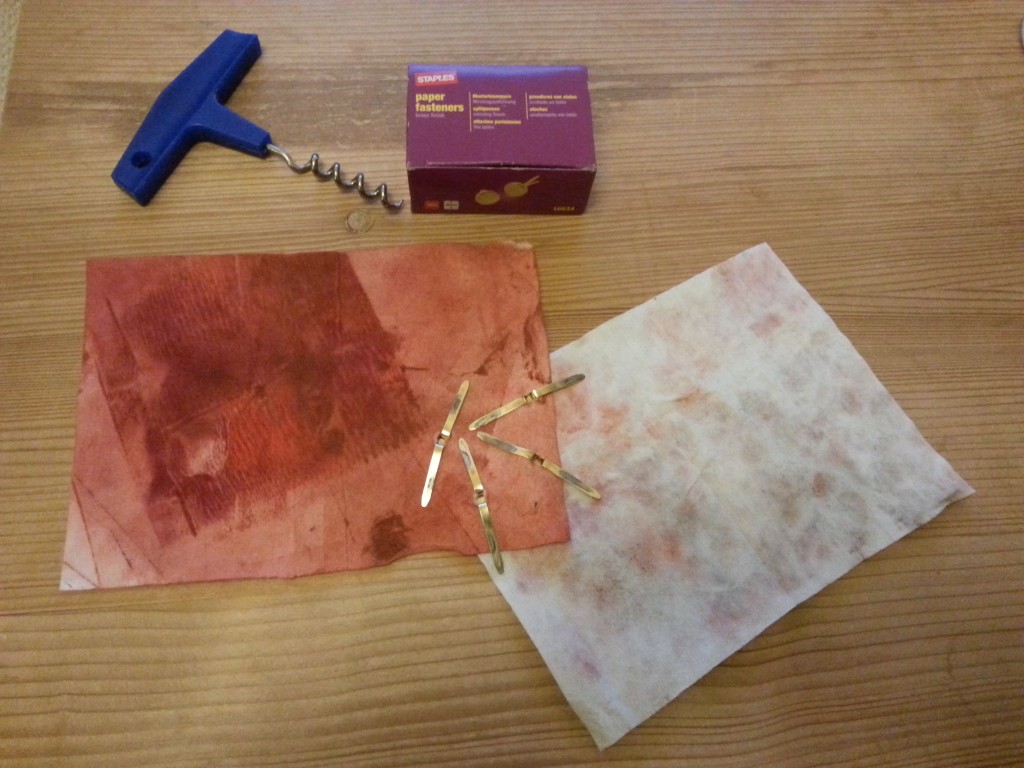Naturally-dyed fleece and cotton chintz
- Wool fleece and cotton fabric
- Wool fleece and cotton fabric
In this sample I have machine-stitched fleece fibres hand-dyed with natural dyes onto cotton chintz fabric. Working with fibre in its raw (unspun) form can be challenging as it is difficult to secure in place, so I used fibres from a Leicester longwool sheep, being a longwool rare breed with a long staple and lustrous, curly locks for enhanced texture.
Cotton fabric and sweet wrappers
- Cotton and sweet wrappers
- Cotton and sweet wrappers reverse
Moving to a rather more ‘synthetic’ option, I machine-stitched crinkly sweet wrappers to a piece of cotton fabric. It was interesting to note the colour variations created by overlapping the different colours of wrapper, both the wrapper against the fabric and the wrappers overlapping on each other. There is lots of scope to explore this kind of colour manipulation further. For larger pieces, it should be possible to use acetate sheet or film acetates.
Coloured PVA
- Coloured PVA
- Coloured PVA
- Coloured PVA
- Coloured PVA
I wanted to explore the idea of the material being both fabric and join. Thinking back to childhood and painting PVA glue onto surfaces (usually hands!) so it could be peeled off later, I added two colours of acrylic paint to PVA and painted it onto a piece of ovenproof baking sheet.
Once the first layer dried, I painted on further layers, allowing each to dry in between, until the ‘fabric’ was sufficiently thick to be peeled off the sheet without breaking up. For the final layer I created an interesting textural surface by using a paste spreader to apply a thick layer and pushing, twisting and bunching the PVA as it dried.
I really like this textural process, particularly as the finished ‘fabric’ is pliable and soft and could, I believe, be glued to another surface. There is also scope to add other colour media (brusho, glitters, dyes, metallics) or even embed sequins, beads and other found objects, trapping them in the layers. If necessary, the final layer could be a clear layer to allow the found objects to remain visible.
Small hand-dyed, handwoven “weavette” samples and lurex fabric
- Weavette wool sample and gauze
- Weavette wool sample and gauze
- Weavette wool sample and gauze
- Weavette wool sample and gauze reverse
The weavette is a small loom that can produce little woven pieces around 10cm square. There are many weave patterns that can be made – I chose a simple plain weave. The yarn was made using the “magic ball” technique. I had several small skeins of hand-dyed yarn that I dyed for a sampling exercise using different depths of shade. I joined these short lengths together into a ball following a rainbow sequence. I made 6 squares in total with a view to exploring how joining the magic ball would play out in the weave. The rainbow repeated twice across the 6 squares and I’ve used the blue/pink-purple section here. (The other squares can be found elsewhere in the exercises).
I machine-stitched a translucent piece of lurex gauze over the woven fabric, overlapping the fabric and adding pleats to the gauze. On the “right” side the effect is neat and attractive with the weave showing through the pleats. On the reverse, the rows of stitching flatten the gauze against the weave and, on close inspection, there are sparkles of the gauze showing through the open weave structure.
As examples of weaving these are open and very soft but could be made more sturdy by using the yarn doubled, using thicker yarn or weaving with a textured yarn. The samples are rather small for fulling as this would shrink them, but it would be something to try to see how effective it might be.
Gelli-print wet wipes joined with brass paper fasteners
- Gelli-printed wipes and paper fasteners
- Gelli-printed wipes and paper fasteners
- Gelli-printed wipes and paper fasteners reverse
- Gelli-printed wipes and paper fasteners reverse
With this sample as with some others, the reverse of this join also creates a dramatic effect where the backs of the paper fasteners spread out to form striking shapes. The wipes were used to clean earlier prints using a gelli plate and acrylic paint but were attractive enough to re-use in their own right.
